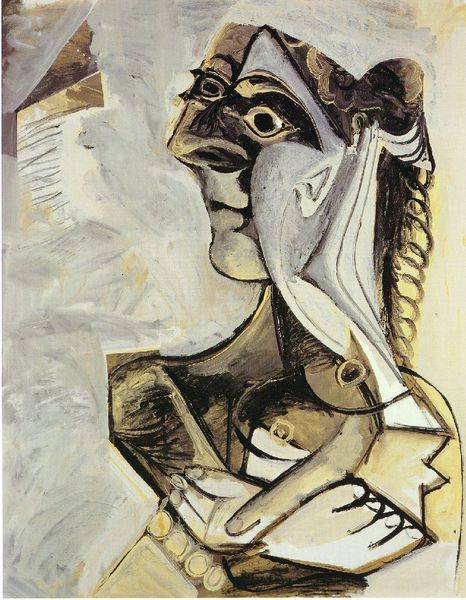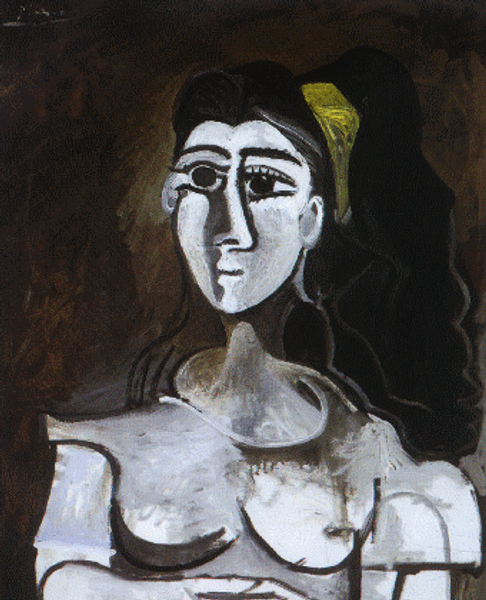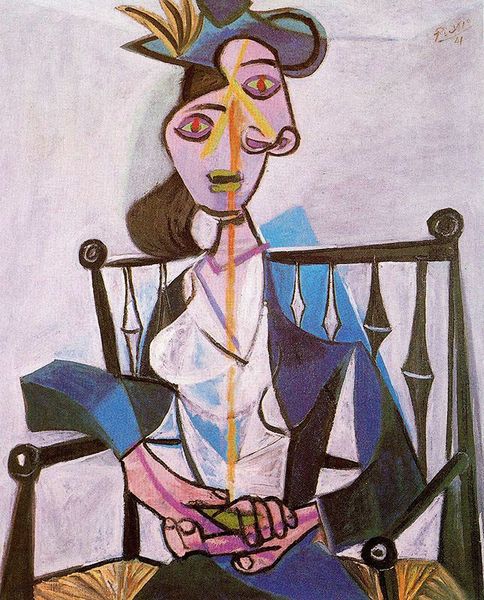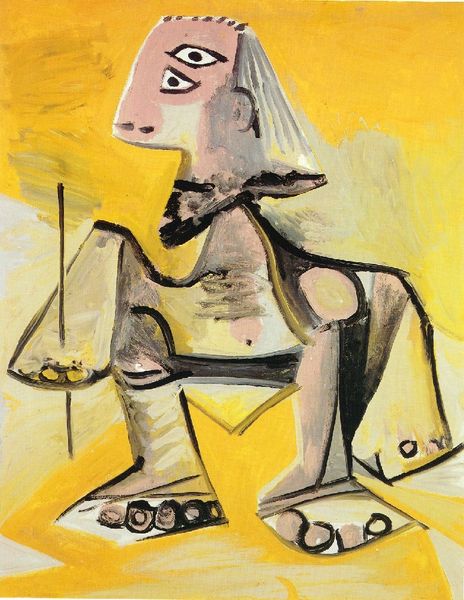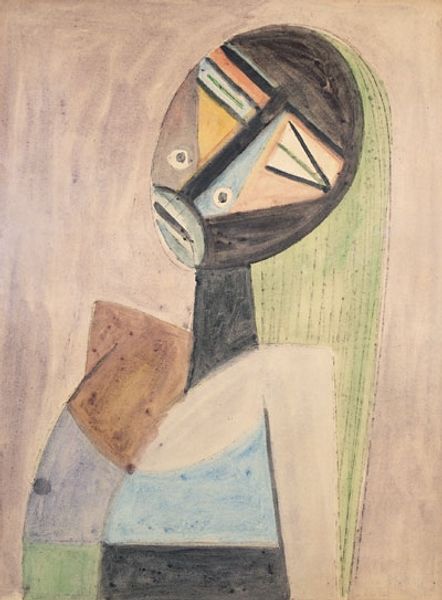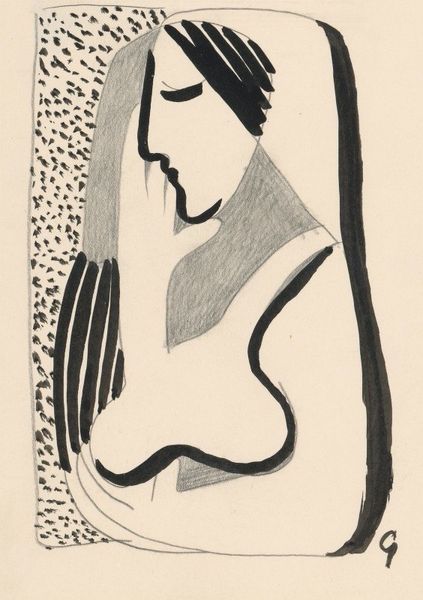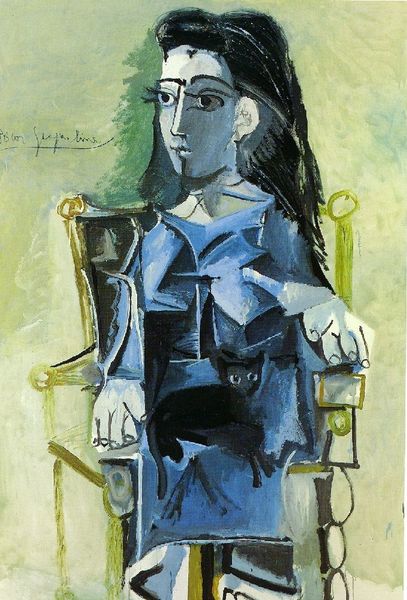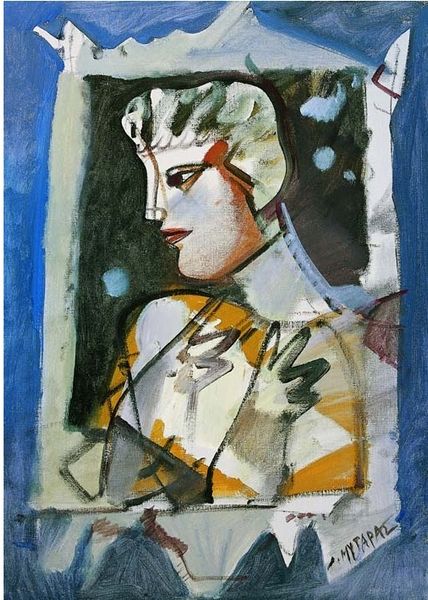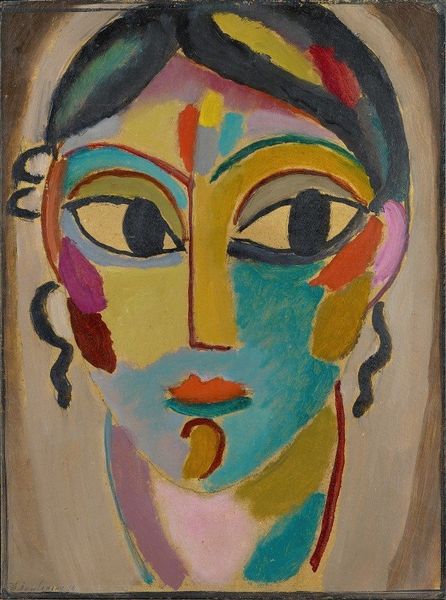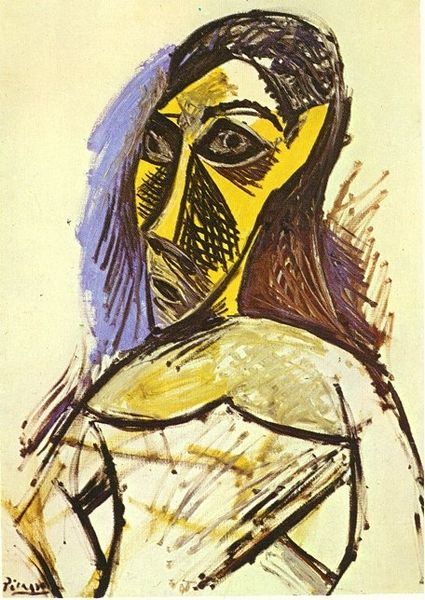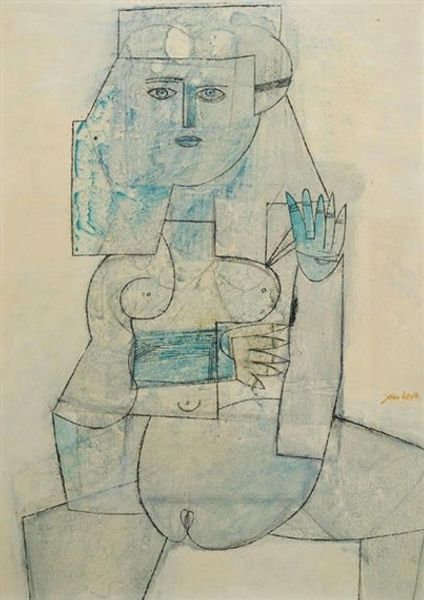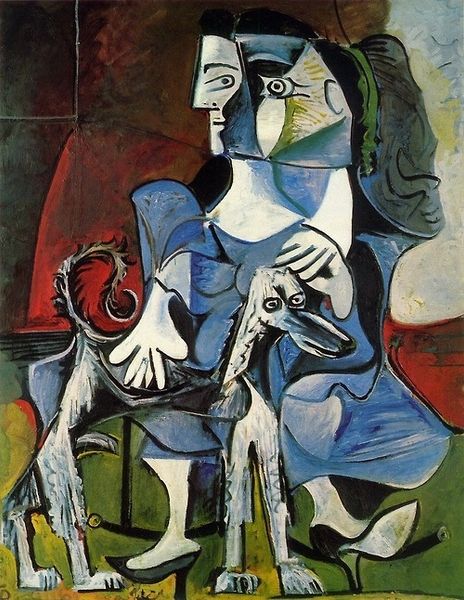
painting, watercolor
#
portrait
#
cubism
#
painting
#
watercolor
#
female-nude
#
sketch
#
abstraction
#
watercolour illustration
#
nude
#
portrait art
#
modernism
Copyright: Pablo Picasso,Fair Use
Editor: Here we have Picasso's "Drawing nude seated in armchair," from 1965, rendered in watercolor. It strikes me as incredibly intimate, almost like a stolen glance. How do you interpret this work? Curator: This piece speaks volumes about Picasso’s complex relationship with representing women, especially later in his career. Consider the public role of his art during the rise of feminism. Do you think the fragmented perspective, typical of Cubism, enhances or diminishes the female form in this depiction? Editor: That's a good question. I initially found the abstraction intriguing, but hearing you talk about its reception alongside the rising feminist movement of the 60s, makes me see that perhaps the disembodiment isn’t empowering. Curator: Exactly. Furthermore, look at the history of the male gaze within art. How does this piece fit within the established power dynamics of artist and model? Are we meant to empathize, objectify, or something in between? Editor: I hadn't considered the established history of the male gaze... Maybe the point isn't necessarily objectification, but the work raises some awareness, even commentary of its effect. Curator: Perhaps. And notice the painting’s title, almost like a straightforward, objective description, yet the image is far from that. It subtly highlights the discrepancy between representation and reality. The watercolor as medium adds a further delicate tension. How does that add another level? Editor: Right. A more solid medium may lead to think the image would impose as a conclusion more. I guess there's so much to unpack by considering its historic era, the themes involved, and cultural views involved in art. Thanks for guiding me through this, Curator! Curator: Absolutely! Art becomes truly fascinating when we analyze it through the lens of its social and historical context.
Comments
No comments
Be the first to comment and join the conversation on the ultimate creative platform.


